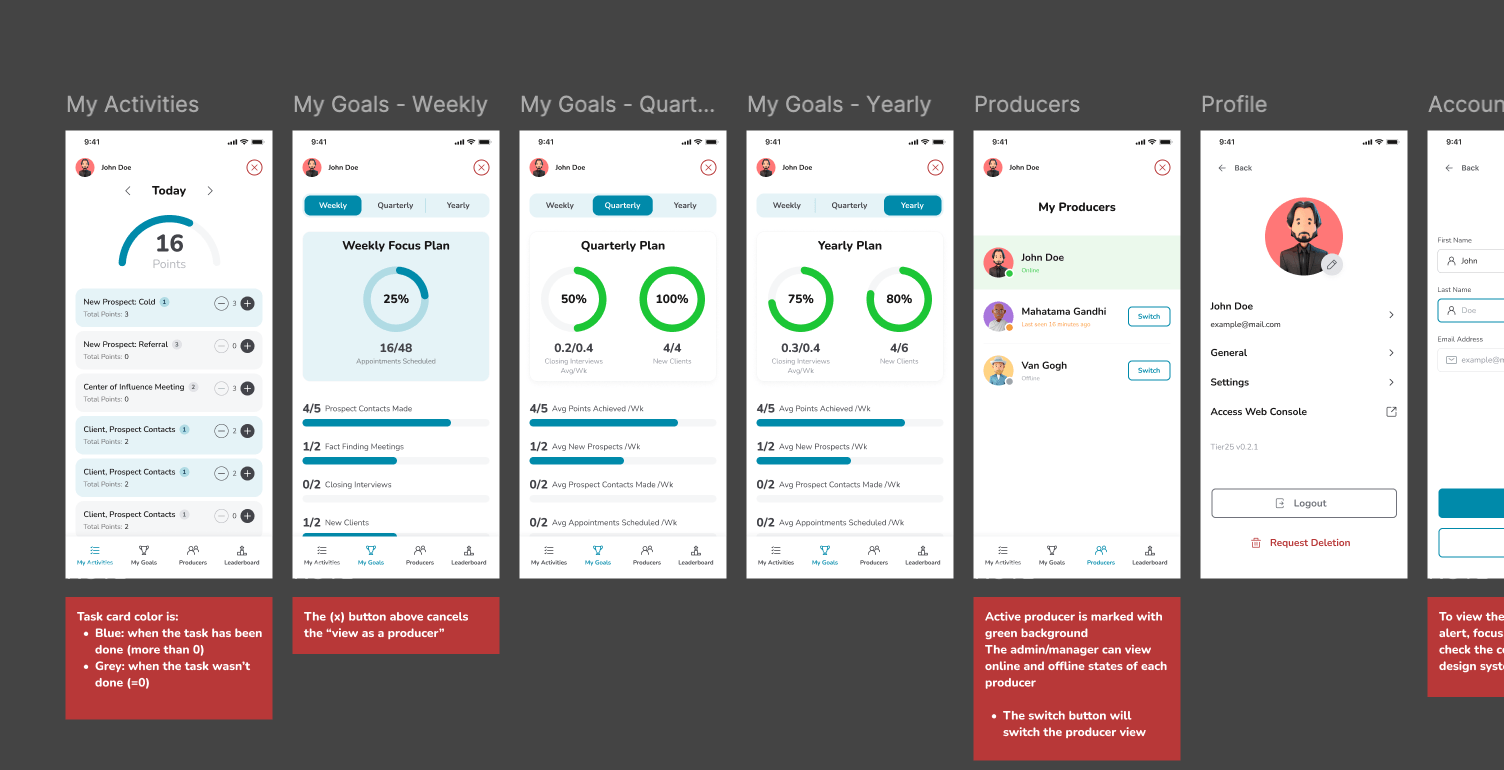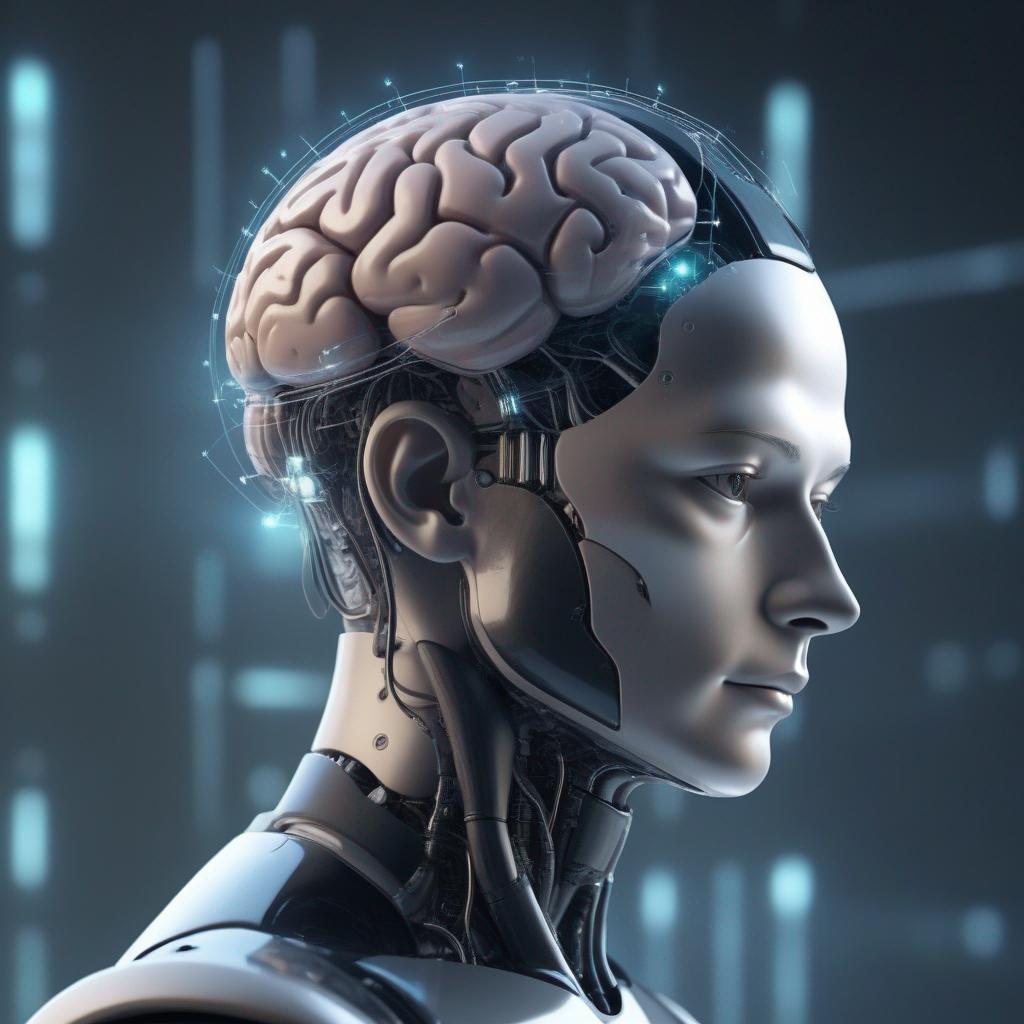Harnessing Imagination: How NextGen Software Transforms Creative Concepts into Cutting-Edge Solutions

NextGen Software specializes in transforming your creative concepts into tangible solutions through our expertise in software development. Our team is committed to turning your imaginative ideas into functional, high-quality software products that meet your business objectives and exceed your expectations.
Key Takeaways
Generative AI is driving efficiency and innovation in software development.
Next-generation data integration is essential for meeting the demands of complex data landscapes.
Leadership and management play a crucial role in driving adoption of generative AI technologies.
Automation technologies are reshaping the future of work and presenting new challenges and opportunities.
Organizations are already investing significantly in GenAI capabilities, driving transformation across the enterprise.
The Power of Generative AI in Software Development
Transforming Creative Concepts into Solutions
In the realm of software development, generative AI stands as a pivotal force in transforming creative concepts into tangible solutions. By leveraging the power of machine learning and artificial intelligence, developers can now translate abstract ideas into functional prototypes with unprecedented speed and accuracy.
Idea Generation: AI algorithms can suggest a multitude of approaches to a given problem, often leading to innovative solutions.
Rapid Prototyping: Generative models can quickly create mock-ups or code snippets, accelerating the development process.
Enhanced Creativity: AI tools provide a sandbox for developers to experiment with new concepts without the constraints of traditional methods.
The synergy between human creativity and AI's computational power is reshaping how we approach problem-solving in software development. This collaboration is not just about efficiency; it's about expanding the horizons of what's possible.
As we harness this technology, it's crucial to maintain a balance between automation and human insight. The goal is not to replace the creative process but to augment it, allowing for a richer tapestry of possibilities that can be explored and refined into cutting-edge solutions.
Driving Efficiency and Innovation
In the realm of software development, efficiency and innovation are not mutually exclusive; they fuel each other. Generative AI is at the forefront of this synergy, providing tools that not only speed up the development process but also open up new avenues for creative problem-solving. By automating routine tasks, developers are free to focus on more complex and innovative aspects of their projects.
The integration of generative AI into software development pipelines is revolutionizing how we approach both creation and optimization.
For instance, consider the impact on project timelines:
Before AI Integration
Initial concept to prototype: 6 months
Prototype to production: 1 year
After AI Integration
Initial concept to prototype: 3 months
Prototype to production: 6 months
This table illustrates the dramatic reduction in time-to-market for software solutions, a clear indicator of enhanced efficiency. Moreover, the iterative design process is enriched, allowing for rapid prototyping and feedback cycles that drive innovation forward.
Overcoming Skepticism and Concerns
While generative AI holds the promise of revolutionizing software development, skepticism and concerns about its practicality and ethical implications persist. To harness its full potential, it is crucial to address these apprehensions head-on.
Education and Transparency: Informing stakeholders about the capabilities and limitations of AI can demystify the technology and foster trust.
Ethical Guidelines: Establishing clear ethical standards can guide the responsible use of AI.
Iterative Implementation: Starting with small-scale projects can demonstrate AI's value and build confidence.
By proactively engaging with skepticism, we can pave the way for more informed and constructive discourse around the use of generative AI in software development. This approach not only quells fears but also encourages a culture of innovation where questioning and challenging the status quo becomes a catalyst for growth and improvement.
Next-Generation Data Integration for Modern Solutions
Evolution of Traditional Data Integration
The landscape of data integration has undergone a significant transformation to keep pace with the dynamic and complex nature of modern data ecosystems. Traditional methods have evolved, adapting to the challenges of handling the increasing volume, variety, and velocity of data. This evolution is marked by the adoption of advanced technologies and methodologies that enable more efficient, flexible, and real-time integration across diverse data sources.
The shift towards next-generation data integration is not just a technical upgrade but a strategic imperative for organizations aiming to derive more value from their data assets.
Innovative approaches such as data mesh have emerged, challenging centralized data architectures and offering a decentralized framework for data management. The table below highlights the key differences between traditional and modern data integration strategies:
Aspect | Traditional Integration | Modern Integration (Data Mesh) |
Architecture | Centralized | Decentralized |
Data Processing | Batch Processing | Real-time Streaming |
Scalability | Limited | High |
Agility | Low | High |
As IT leaders navigate this new era, they must reconsider conventional frameworks and embrace these innovative paradigms to manage workloads effectively across diverse environments, including edge computing, core datacenters, and hybrid cloud systems.
Meeting the Demands of Complex Data Landscapes
In the face of rapidly expanding and diversifying data, traditional integration methods falter, unable to keep pace with the volume, variety, and velocity of information. Next-generation data integration is not just an upgrade; it's a necessary revolution, equipping organizations to harness the full potential of their data assets.
Embrace advanced technologies and methodologies
Ensure efficient, flexible, and real-time data integration
Optimize infrastructure for the GenAI era
The adoption of multiple cloud platforms exemplifies the complexity of modern IT landscapes. Effective data management across these platforms is crucial for seamless operations and data accessibility.
The concept of 'data mesh' emerges as a beacon of innovation, challenging centralized data architectures and advocating for a decentralized approach. It's a strategic shift that promises to align data management with today's business agility demands.
Innovative Solutions for Business Opportunities
In the rapidly evolving business landscape, innovative solutions are paramount for companies seeking to harness the full potential of their data. These solutions not only streamline operations but also unlock new avenues for growth and competitiveness.
Data Analytics Platforms: By integrating advanced analytics, businesses can derive actionable insights from their data, leading to informed decision-making.
Cloud-based Integration Tools: These tools facilitate seamless data sharing across various systems, enhancing collaboration and efficiency.
AI-driven Forecasting: Leveraging AI for predictive analysis helps businesses anticipate market trends and customer needs.
The key to capitalizing on these opportunities lies in the strategic implementation of these technologies, ensuring they align with overarching business goals and drive measurable outcomes.
As businesses continue to navigate complex data landscapes, the adoption of these innovative solutions becomes not just advantageous but essential. The integration of such technologies fosters a culture of continuous improvement and positions companies at the forefront of their respective industries.
Leadership and Management in Generative AI Implementation
Driving Adoption of Generative AI Technologies
The integration of Generative AI (GenAI) into enterprise ecosystems is not just a technological upgrade but a strategic imperative. Organizations are rapidly recognizing the need to embed GenAI capabilities to stay competitive in an 'AI Everywhere' future. With IDC forecasting a surge in AI-centric systems spending to over $300 billion by 2026, the urgency to adopt GenAI is palpable.
To effectively drive GenAI adoption, a structured approach is essential:
Identify business opportunities where GenAI can have a significant impact.
Invest in cross-functional teams to foster innovation and solution development.
Implement project management and leadership to guide successful integration.
Innovate continuously by staying abreast of GenAI advancements and applications.
Inspire and mentor teams, ensuring skill development and knowledge transfer.
The journey towards widespread GenAI adoption is as much about technology as it is about people and processes. It requires a cultural shift that embraces continuous learning and collaborative innovation.
As organizations navigate this transformative phase, the focus must be on creating an environment that not only supports but accelerates the adoption of GenAI. This involves clear communication of benefits, addressing concerns, and demonstrating tangible improvements in efficiency and decision-making.
Project Management and Leadership
Effective project management and leadership are critical in the successful implementation of Generative AI technologies. Proven ability to manage multiple projects with various stakeholders is essential for driving high-impact results. A project manager in this field must be a self-starter, capable of initiating projects with minimal supervision and thriving in dynamic, fast-paced environments.
Resilience & Stress Management: Creating order in chaos and managing performance efficiently.
Proactivity: Actively seeking opportunities and taking initiative.
Venture Fluency: Quickly learning and understanding complex concepts such as business models and financial structures.
The true test of leadership in AI implementation lies not only in managing the technology but also in fostering trusted relationships and steering the team towards innovation and excellence.
Stakeholder management is another key aspect, requiring exceptional interpersonal skills and the ability to build trust and rapport. A methodical and systematic approach, coupled with strong organizational skills, ensures that project objectives and deadlines are met. Leaders must also possess a sharp, quick-learning ability to understand the nuances and needs of various teams, prioritizing effectively to solve problems with a bias for action.
Mentoring and Collaboration
In the realm of Generative AI, the role of mentoring and collaboration cannot be overstated. Mentoring provides a framework for knowledge transfer, ensuring that the intricacies of AI technologies are well-understood and effectively utilized by all team members. Collaboration, on the other hand, fosters a culture of shared responsibility and innovation, where diverse perspectives lead to more robust solutions.
The success of Generative AI implementation is as much about the technology as it is about the people behind it. Creating an environment that promotes continuous learning and mutual support is crucial for navigating the complexities of AI projects.
Effective collaboration and mentoring within teams can be structured around key areas:
Organizational Collaboration: Building trust and an enterprise mindset across the organization.
Mentorship Programs: Onboarding and supporting mentors to guide less experienced team members.
Talent Sourcing: Engaging diverse talent for expertise in emerging areas.
Empowerment: Ensuring team members feel valued and are provided with growth opportunities.
By decentralizing decision-making and fostering a culture of entrepreneurialism and curiosity, organizations can leverage the full potential of their teams in the AI-driven landscape.
The Transformative Power of Automation Technologies
Reshaping the Future of Work
The advent of automation technologies is not just altering the landscape of industries; it is fundamentally reshaping the future of work. As organizations adopt these technologies, they encounter challenges that must be navigated to fully harness their potential. Yet, the opportunities for transformation are immense, promising a new era of efficiency and innovation.
Challenges:
Adoption and scaling of automation initiatives
Data privacy concerns
Potential job displacement
Regulatory oversight demands
Opportunities:
Driving digital transformation
Enhancing customer experiences
Optimizing operational efficiencies
Fostering competitive parity with early adopters
The transformative power of automation extends beyond mere efficiency; it is a catalyst for creating new business models and scaling massively in today's dynamic digital economy.
Leaders in technology are now tasked with strategic, multidimensional roles that require them to adapt quickly to these changes. They must navigate through the complexities of IT/OT convergence and the integration of AI into services, products, and experiences. The goal is not only to maintain competitive parity but to set the stage for unprecedented growth and sustainability.
Optimizing Workflows and Efficiency
In the realm of automation technologies, optimizing workflows and efficiency stands as a pivotal goal for organizations aiming to stay competitive. By streamlining processes and enhancing productivity, companies can realize significant gains in both performance and cost-effectiveness.
Run meetings to align efforts with objectives.
Develop a consistent data reporting cadence.
Implement enhanced operating models for greater efficiency.
Optimize in real-time and incorporate learnings into future plans.
Efficiency is not just about speed; it's about maximizing the impact of every action and decision within an organization.
The integration of advanced tools and software, such as CRM systems and event management platforms, plays a crucial role in this optimization. These technologies facilitate the management of calendars, scheduling, and the organization of meetings, ensuring that every minute is accounted for and every resource is utilized to its fullest potential. The table below illustrates the impact of workflow optimization on key performance indicators (KPIs):
KPI | Before Optimization | After Optimization |
Meeting Preparation Time | 45 min | 30 min |
Report Generation Time | 3 hours | 1 hour |
Event Planning Cycle | 2 weeks | 1 week |
By adopting a proactive approach to problem-solving and maintaining a keen attention to detail, businesses can navigate the complexities of modern work environments with agility and precision.
Challenges and Opportunities in Automation
As organizations navigate the digital transformation journey, the adoption of automation technologies presents both significant challenges and unparalleled opportunities. The strategic implementation of automation is key to scaling successful digital businesses, bridging skills gaps, cutting costs, and fostering agility and innovation.
Automation is not just about efficiency; it's a transformative force that reshapes how we work and compete in the digital era.
The challenges are multifaceted, ranging from data privacy concerns to the potential displacement of jobs, demanding a careful balance between innovation and regulatory oversight. Yet, the opportunities for growth and competitive advantage are compelling, driving an AI-first approach among forward-thinking organizations.
Here are three pivotal areas where automation has a profound impact:
IT Automation: Streamlining operations and reducing manual errors.
Process Automation: Enhancing productivity and operational efficiencies.
Value Stream Automation: Optimizing the entire value chain for better customer experiences and business outcomes.
Conclusion
In conclusion, NextGen Software's expertise in transforming creative concepts into tangible solutions through software development is revolutionizing the industry. The integration of GenAI capabilities has proven to be a force multiplier, driving significant investment and delivering high-quality, productive systems. As organizations continue to embrace innovative technologies and methodologies, the transformative power of automation and generative AI will reshape the future of work and drive digital transformation. NextGen Software is at the forefront of this revolution, empowering enterprises to unlock the transformative potential of AI and drive their digital transformation journeys. With NextGen Software, the future of software development is not just about sci-fi fantasies; it's about tangible business results and competitive edge.
Frequently Asked Questions
What is the role of Generative AI in software development?
Generative AI plays a crucial role in transforming creative concepts into tangible solutions by leveraging advanced algorithms to generate innovative and cutting-edge software products.
How does NextGen Software drive efficiency and innovation?
NextGen Software drives efficiency and innovation by specializing in the transformation of imaginative ideas into functional, high-quality software products that meet business objectives and exceed expectations.
What are the challenges and opportunities in automation technologies?
The challenges in automation technologies include adoption and scaling, while the opportunities lie in driving digital transformation, optimizing workflows, and reshaping the future of work.
What is the significance of leadership and management in Generative AI implementation?
Leadership and management play a vital role in driving the adoption of Generative AI technologies, providing project management and leadership, and mentoring cross-functional teams to identify business opportunities and develop innovative solutions.
How does Next-Generation Data Integration meet the demands of complex data landscapes?
Next-Generation Data Integration evolves traditional methods to meet the demands of modern, complex, and rapidly changing data landscapes, enabling organizations to derive more value from their data assets.
What is the impact of GenAI on the software development life cycle?
GenAI has dominated the tech conversation and is driving significant investment in capabilities across the enterprise, including customer-facing applications, decision support applications, and employee applications, revolutionizing the software development life cycle.









